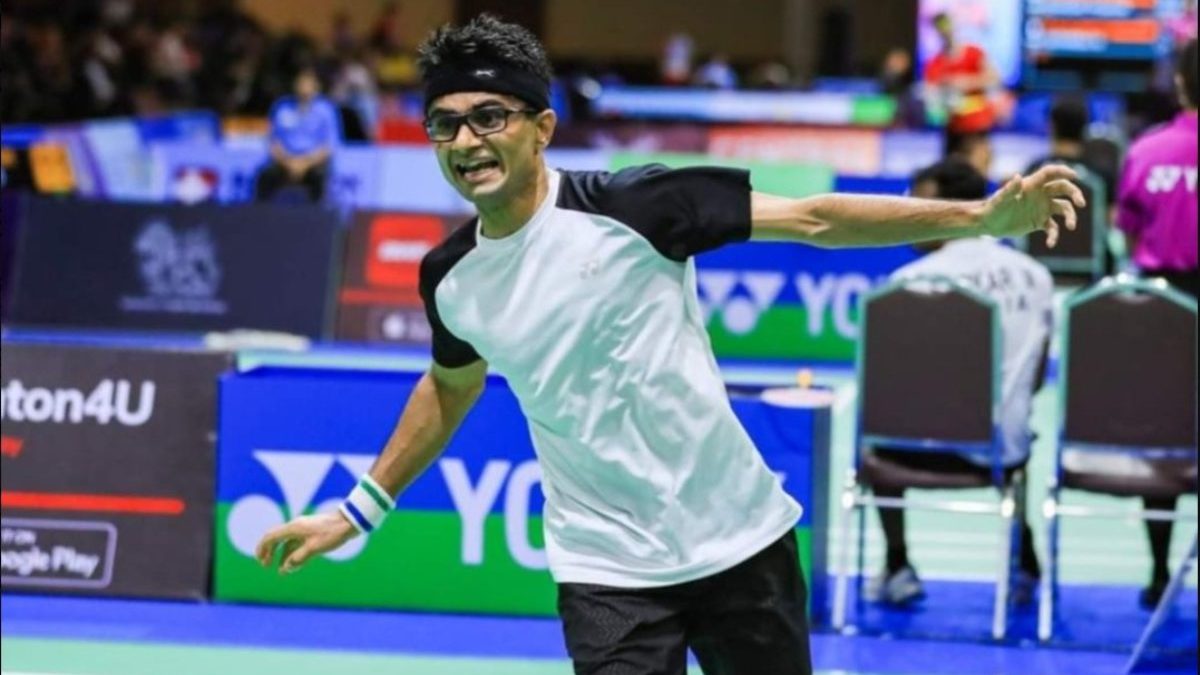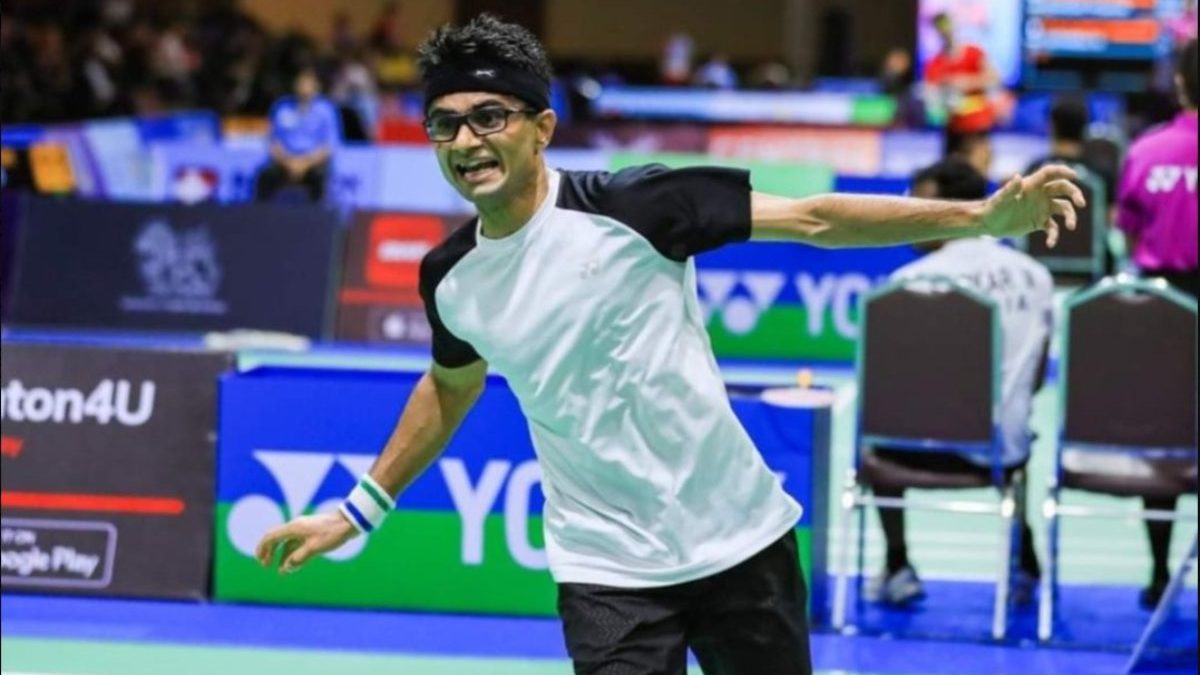Outstanding performances by Pullela Gopichand Badminton Academy batchmates Sameer Verma and B Sai Praneeth lit up the Syed Modi International Grand Prix Gold tournament, bringing into focus the considerable strides made by a bunch of talented young shuttlers who eat, drink, sleep and play the game, day in and day out, at the national coach’s badminton centre in Gachibowli, Hyderabad.
In a tournament robbed of much of its sheen by the absence of most of the top international stars, India could take solace from the fact that the host nation bagged three of the five titles at stake – both the stellar singles and the mixed doubles.
But, while few eyebrows were raised at the triumphs of Sameer Verma and Pusarla Venkata Sindhu in the singles events, the win notched by Pranaav Jerry Chopra and his left-handed partner, N Sikki Reddy, was worthy of much applause, for the draw in the mixed event had been headed by the crack Danish pairing of Joachim Fischer Nielsen and Christina Pedersen.
The only crowns that escaped Indian clutches were the men’s and women’s doubles, in which the Danish combinations of Boe-Mogensen, and Pedersen-Rytter Juhl justified their respective top seedings, although the former were troubled all the way to the final, and actually came within two points of defeat at the hands of Indonesians Muhammad Ardianto and Fajar Alfian in the semi-final.
The Syed Modi International marked the passage of almost exactly two months since 22-year-old Sameer had reached the final of his first Super Series tournament, the Hong Kong Open. Along the way, he had lowered the colours of the redoubtable Danish world No 2, Jan O Jorgensen, before bowing to Ng Ka Long Angus in the final in three games.
An error-strewn performance had followed in the Macau Open GP Gold event, a week later, and had seen the reigning Indian national champion make a quick exit. Coach Gopichand had stressed at the time that the vastly talented player, younger of the two Verma brothers training at his academy, needed to develop consistency.
It was therefore heartening to witness the grit and gumption that the eighth seeded Sameer revealed while lifting the men’s singles crown in the sadly devalued Lucknow tournament, which is held every year to honour the memory of eight-time national champion Syed Modi, who was foully murdered in April 1989.
Sameer’s victim in the final was his regular practice partner and former national champion, B Sai Praneeth, who turned the form book upside down by accounting for another Academy colleague, Kidambi Srikanth, in a rip-roaring, long-drawn semi-final, at 21-17 in the decider.
Srikanth, who has dropped from a career-high world ranking of No 3 to a present level of No 19, had been given the third seeding in the event, behind Denmark’s 31-year-old Hans Kristian Vittinghus (No 14 on the BWF ladder), after the original top seed in the event had dropped out at the last moment.
In effect, it meant that Srikanth was the second-best player in the tournament, on paper at least, while Vittinghus was expected to win the competition. Neither of them went the distance. Sameer, who seems to thrive on Danish blood, knocked Vittinghus out in the quarter-final by a comfortable 21-15, 21-13 scoreline, while Sai Praneeth outlasted Srikanth, who still seems a mite short on physical fitness after recovering from a stress fracture of the foot.
The Sameer-Praneeth battle for the Syed Modi International crown was their fourth meeting, and Praneeth had led their head-to-head by a 2-1 margin, winning their last encounter in the 2015 Bangladesh Open. The younger of the Verma brothers, however, showed that he is, along with Prannoy, one of the two most improved Indian male players in 2016, as he pipped Praneeth in the first game at 21-19, before running away with the second at 21-16.
Mention must be made of the outstanding showing of wiry 20-year-old Mumbai left-hander Harsheel Dani, who powered his way into the semi-final after two excellent victories over Premier Badminton League hero HS Prannoy (at 21-18, 21-18) and Denmark’s Emil Holst (at 21-11 in the deciding game). He, however, failed to measure up to the speed and hustle of Sameer in the penultimate round, and went out without a whimper.
For the top-seeded PV Sindhu, who has been in raging hot form over the past six months since her silver-winning exploits at the Rio Olympics, this tournament presented little challenge. There were none of the top ten women in the fray – or, for that matter, those among the top 20.
The highest ranked player in the competition, behind Sindhu, was World No 23, Beatriz Corrales, a 24-year-old Spaniard who is world champion Carolina Marin’s occasional practice partner back home, and who could not have been considered a threat to Sindhu in her current mood.
Even Saina Nehwal, presently ranked one rung above Sindhu’s No 9 spot, and who had comfortably beaten her former Gopichand Academy stable-mate in the final of the 2014 edition of this tournament, chose to give the event a miss. Saina, recently recovered from knee surgery, preferred to concentrate her energies on preparations for the All-England Super Series tournament scheduled for the first week of March.
Only a handful of upcoming Indonesians barred Sindhu’s path to the title – Fitriani Fitriani (18), ranked No 45 in the world, Gregoria Mariska (17), who occupied the 108th berth in the BWF rankings, the 44th ranked Hanna Ramadini (21) and the 51st ranked Dinar Dyah Ayustine (23).
It was the baby of the Indonesian team, Gregoria Mariska, who marched confidently into the final, leaving a trail of higher ranked players in her wake, notable amongst whom were No 5 seed Ayustine, No 3 seed Corrales (by an extremely impressive 21-9, 21-11 scoreline) and No 6 seed Ramadini.
This brought her face-to-face with the rangy Sindhu, who had the full measure of the No 4 seed, Fitriani, in the semi-final. In their only earlier meeting, at the Indonesian Masters in December 2015, Sindhu had edged Mariska in three games, at 21-16, 19-21, 21-12 after losing the middle stanza despite holding a sizable lead in the closing stages of that game.
This time, the Indian did not permit the upcoming 17-year-old Indonesian even the luxury of winning one game. The 21-13, 21-14 demolition was an accurate indicator of the huge gap that yawned between the two in terms of speed, power, range of strokes and temperament. Mariska may be a player for the future – and there is no doubt that the land of Verawaty Wiharjo and Ivana Lie could do with a world-class woman player – but she has a long way to go before she can match Sindhu’s abilities.


)




)
)
)
)
)
)
)
)